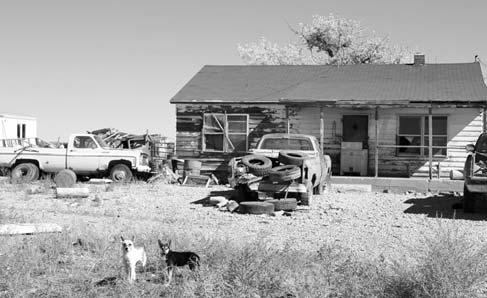
18 minute read
Code Compliance: Difficulties and Ideas for Small Towns
By Kyle Slaughter, Salt Lake City, Utah
“Although this article is directed to small-town leaders, the principles inherent in code enforcement strategies can benefit leaders, planners, and code enforcement officers in any community.”
Advertisement
The Enforcement Issue
Small towns face enormous hurdles in enforcing code. It shouldn’t come as much of a surprise; after all, in the small communities that boast the best sense of community in America, it isn’t very popular to tell people who have been your family’s neighbors stretching back three generations (and who are almost always related to you), to clean-up their tire pile, get their old trucks off the street, or cut down their dying tree.
The difficulty is compounded by the lack of barriers between elected officials and the public—in small towns, everyone is considered a neighbor. Everyone knows everything about everyone else. Additionally, many small towns don’t have a single full-time employee or staffer, much less someone with an understanding of the town code or code enforcement practices. As a result, over-worked elected officials with full-time jobs have to squeeze enforcement and compliance activities in between soccer practice, choir, and spending a few precious moments with their children.
While uncomfortable in any setting, the issues related to small town code enforcement are not as prevalent in larger cities. In these communities, full-time officers and others are hired with the sole objective of investigating code infractions and enforcing compliance. This highlights the importance of small towns having strategies that work for their unique situation.
So, Why Enforce?
The difficulties listed above beg a very important question: “If enforcement is so hard why should small towns (or anyone for that matter) bother enforcing code at all?” It’s a fair question. The answer lies in the fundamental elements of community vision and planning to become the community its leaders and residents have always wanted.
Without a municipal code, and subsequent code enforcement and compliance measures, the general plan lacks the teeth required to attain the community’s vision. Code enforcement is part of the equation that transforms a town from a politically designated area into the ideal community.1
“Code compliance is recognized as a key component of fighting public health threats like Zika virus by reducing standing water from old tires or broken down vehicles to eliminate breeding habitat for mosquitos and other disease carrying pests.”
Rural community vision statements often declare the importance of maintaining their rural atmosphere while
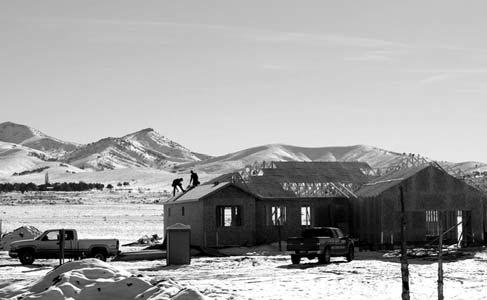
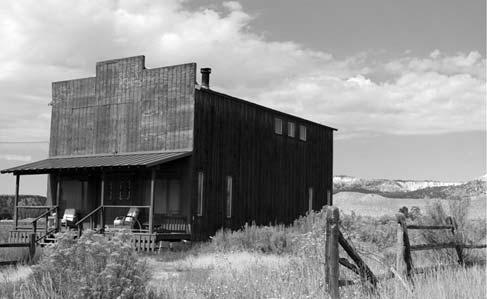
GOOD PLANS
JUSTIFY MUNICIPAL
CODE
JUSTIFY CODE
ENFORCEMENT
ALLOWS YOU TO
REACH
COMMUNITY GOALS & VISION
remaining family friendly, economically healthy, and safe. Codes help realize each of these goals through:
1.Improved land values 2.Decreased numbers of attractive nuisances (attractive nuisances are objects that are hazardous and likely to attract children. Landowners have a responsibility to remove or adequately fence/protect the hazard to protect children from potential injuries) 3.Improved safety 4.Increased sense of community 5.Improved public image 6.Improved quality of life 7.Reduced health threats 8.Increased likelihood of economic development
It takes more than one of these benefits to convince leaders to start enforcing their code, and in some cases philosophical understandings of property rights have to be addressed before enforcement measures will even be considered. Still, with the right approach, leadership can find ways to create an enforcement program that satisfies both the community and the neighbors.
Strategies that Work for Small Towns
So, what are small towns to do? Not everything. Taking too big a step in the beginning will certainly kill enforcement efforts in towns where little or no enforcement has ever taken place; some community members will claim too much government oversight or the mayor or council member in charge will run out of time and energy for the project.
A measured approach that builds capacity as it increases enforcement measures is more likely to succeed.

We have three general recommendations, and then list several specific options for community leaders as they set up their community’s code enforcement program.
1. Have a positive view. Paint your enforcement measures in a positive light by focusing on compliance (rather than incompliance) and the benefits community members receive as they come into compliance and help their neighbors comply as well. 2. Involve the community. Make enforcement a community effort through strategies that incorporate the entire community where possible. Community clean-up days, assistance programs for the elderly, and even small revolving loan funds can be started to involve large portions of the community. 3. Take a measured approach. Don’t go too deep too fast. Community members and leaders will need to take their time feeling out how enforcement can and should happen within the community. Taking small, incremental steps that slowly grow the community enforcement program to the right size will ensure the community can handle more difficult enforcement questions in the future.
Steps to Good Enforcement
Leaders should consider three primary steps to good code enforcement within their community: 1.Start at the plan 2.Make sure you have “good” code 3.Establish an enforcement program
Start at the plan
Starting at the plan means evaluating the guidance and direction your general plan provides. Does your general plan accurately represent your community’s long-term goals? Does the zoning map accurately represent the zones within the community?
Ensuring the general plan is an accurate, adequate representation of community goals and vision will guarantee that the code is enforced with an end in mind.
Make sure you have “good” code
Codes need to comply with state laws and should be a representation of the goals and vision laid out in the general plan. The code should expand on goals found in general plan and get into the “nitty-gritty” details of the town. To prevent codes from becoming irrelevant and unmanageable, remember that codes should support the general plan. If a particular code does not, it might need to be reevaluated. Small towns should consider simplifying their code as well—if no one within the community can actually understand or interpret the code, it’s a pretty good indicator that there is an opportunity for simplification.

Establish an enforcement (or compliance) program
The final step is establishing an effective enforcement program. An enforcement program is the community’s plan for bringing community members into compliance through incentives and/or punishments. A good enforcement program clearly establishes how the community will identify code violations and bring about compliance. An effective enforcement program educates and prepares residents for enforcement, and should encourage their participation.
“Code too complicated for the leadership to understand is more burden than blessing; it can make planning commissions and city councils ineffective at implementing community goals at best and get the city tied up in legal battles at worst.”
This program should also be viewed through the “general plan lens.” i.e. Local leaders should ask how the enforcement program matches the character of the community as laid out in the general plan and should focus the program on the codes most pertinent to community goals.
There are a multitude of questions communities will face and have to answer as they set up enforcement programs. These questions have to be answered at the community level, taking into account unique local factors. Communities that have not been enforcing code can use the recommendations below as guideposts to establish an enforcement program tailored to their specific needs.

Capacity
“Capacity is the number of people who spend part of their time working on town or city business. Capacity is key to successful enforcement initiatives. New capacity does not always have to be paid, though.
Volunteers, particularly youth and retirees, offer skills
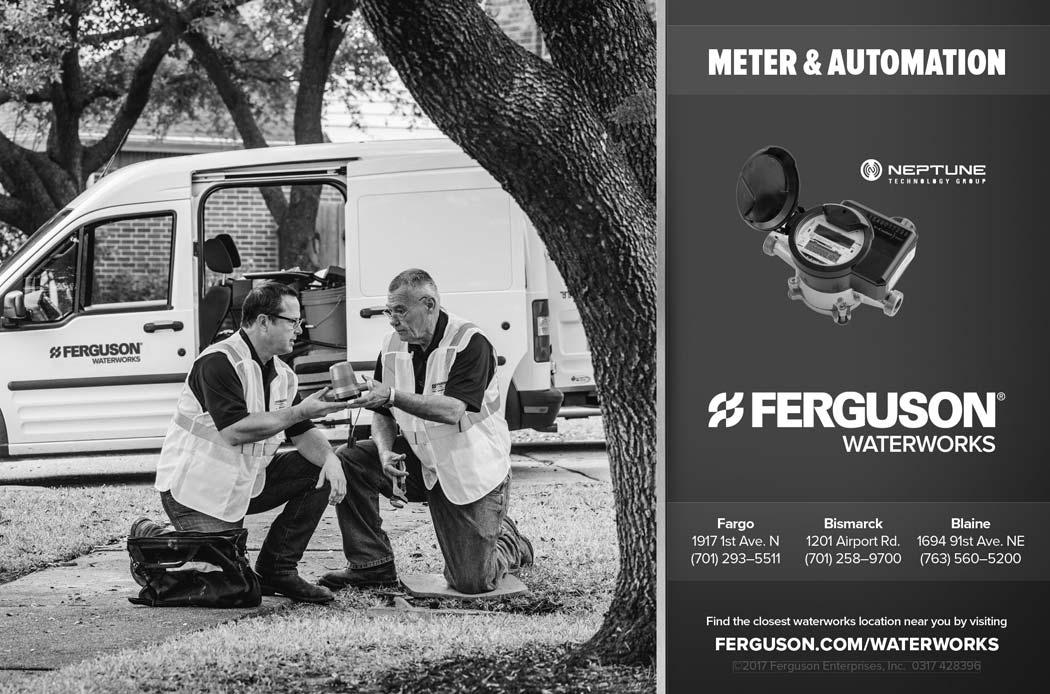
and energy that can move an enforcement program from paper to action.”
Capacity is always difficult for small towns. Everyone who works (or volunteer as leaders) for small towns wear multiple hats. Determining who will actually implement the enforcement program is as important as the actual enforcement measures. Leaders should get creative as they consider who can participate in the enforcement program and what unique assets each person brings to the enforcement and compliance effort. See the chart below for the groups that can assist in the enforcement program.
Frequency
Enforcement should be conducted when there are violations (whether identified by citizens or community officials). Citizens don’t always know what constitutes a violation or don’t want to report their neighbor’s violations, and city officials rarely know everything that occurs in their community. For these reasons, community inspections help to inform enforcement needs, and are an essential element to actually bringing the entire community into compliance.
Consistency is the most important aspect of enforcement over time. Available personnel and capital and the severity of code violations within a community are key considerations for developing an enforcement timeline. Based on these factors, communities can create a compliance plan that incorporates specific enforcement strategies such as who will carry out these strategies and how frequently enforcement patrols or surveys will take place. Ensure your city has the manpower and budget to enact their compliance plan and timeline before adopting
Sample enforcement plan
This sample enforcement plan focuses on two community clean-up days; the clean-ups are community-wide and require assistance from public works. Most enforcement programs in very small towns should be brief, simple, and ensure that they do not over-extend the town’s enforcement ability. In this example, any empowered group could implement the enforcement program.
j Plan & Code Audit. Every five years, the planning commission will audit the general plan and code, ensuring the plan still matches community goals and that the code serves to accomplish the goals in the general plan (if doubts about the plan exist, a request can be made for the town council to consider a re-write).
PERSON/ORG. WHO & HOW
Enforcement Resource Sharing
Community Institutions (Churches, Clubs, etc.)
Citizens
Planning & Zoning Commission
Neighboring Communities
Private Company on Retainer Several communities in northern Utah currently share the cost of enforcement by having multiple jurisdictions pay a contractor (in many cases the local sheriff’s office) to cite violations in their jurisdictions. Other communities also pay local law enforcement to issue fines and clean up violations.
Local scout troops, churches, and service organizations are great resources for helping residents with trash, cars, or other blight problems. These local institutions can increase the number of residents aware of clean-up days and code requirements. They also reduce barriers for citizens resistant to city interference with their property. Public works vehicles and volunteers’ vehicles can be used in partnership with these institutions to maximize participation.
Citizen complaints can be the primary information source for violations in the city. Online submission forms tied into community websites provide a low-cost means of collecting citizen complainants addresses, contact information, dates, and concise descriptions of violations before the complaint is submitted. These systems require a community to make someone available to follow up on complaints.
Planning and zoning commission members should know the code and the general plan; this knowledge makes them ideal candidates for an enforcement team. This can be done with compensation for commission members or pro bono. Flexibility should be provided to these groups to institute legal, yet creative, enforcement programs.
For communities with no capacity to pay, trading services with neighboring communities can reduce costs and ensure enforcement. In this scenario, two neighboring cities would provide code violation warnings and fine violators for each other. This is allows a third party to cite violations which may reduce interpersonal tensions in small towns. It also makes high-school sports games more interesting.
Similar to enforcement sharing, communities can put their code enforcement on retainer to a private entity. This provides arms-length, unbiased enforcement and helps ensure consistency across the community.
Citizen Inspectors Cities can educate specific residents on the municipal code and train them on the cities enforcement procedures. The city can then allow these citizen inspectors to patrol their neighborhood, document violations, and begin the code enforcement process. Belligerent or repeatedly incompliant cases should be referred to city officials.

j Public Meeting. Each March, the mayor and city council will host a public meeting in which they will briefly explain the code’s requirements, the reasons for the code, and how code is enforced within the city, including advertising the upcoming community cleanup. Refreshments should be provided. j Compliance Training. Following the public meeting, the code enforcers (consisting of one council member, public works employee, and the city recorder) will be retrained on city code and proper code violation notification and enforcement procedures. j Community Clean-Up Day. A semi-annual Community
Clean-Up Day will occur in the first two weeks of April and November. One free pass to the local landfill will be provided to each residence (large trailers could be used when landfills are not available). j Community Compliance Patrol. During the two weeks following the clean-up day, city officials will patrol the community, providing notice to property owners of violations. j Complaint Response. During the rest of the year, the city will respond to citizen complaints via the city website’s code violation referral page.
In Sum
Leaders in every community face difficulties enforcing code. Taking a measured approach to enforcement that places the general plan first will help communities overcome the negative stereotypes of code enforcement. This approach will also help small towns in particular develop programs that can be implemented even with limited staff and time. Communities can develop enforcement programs that match their culture, resource capacity, timelines, and use code enforcement as a tool in reaching their community vision.
Online Resources
http://ruralplanning.org/assets/code_enforcement-web.pdf http://ruralplanning.org/toolkit.html
About the Rural Planning Group
Created in late 2013, the Rural Planning Group (RPG) is a creation of the State of Utah’s Community Impact Fund Board (CIB). The CIB obtains funding from mineral lease royalties on extractive industries operating on federal lands. These funds are collected by the federal government and then returned to the state, the State returns a portion to CIB for use in rural communities. The CIB disburses this funding to communities that are affected by mineral resource development on federal lands. RPG enhances the use of these funds by promoting planning and management best practices in rural communities. RPG accomplishes this through providing planning assistance for Utah’s rural communities, facilitating communication and coordination between key stakeholders, offering planning and technical assistance, and developing and delivering training, tools, and resources. By implementing these services, RPG provides rural communities with tools needed to build the futures they desire individually and to prepare for the future as a whole. Visit http://ruralplanning.org/
Kyle Slaughter is a Consultant with Utah’s Rural Planning Group, a program of Utah Housing and Community Development, part of the Utah Department of Workforce Services. While he has consulted towns in rural Utah for three years, Kyle’s background is in public administration and private sector consulting. Adept at adapting technical concepts for general audiences, he has drafted studies and guides on small town code enforcement, airport zoning, annexation, and the coal and oil industries in Utah,
ACTION Plan audit*
Code audit*
RESPONSIBLE Jan Feb Mar Apr May Jun Jul Aug Sep Oct Nov Dec
Planning Commission Planning Commission Public meeting Mayor Code compliance officer training Planning Commission Community clean-up day City Council Town-wide violation patrol Code Enforcement Compliant response Code Enforcement *Every five years. This is simply a generic recommendation. Cities should consider their rate of change in determining how often to review.
STRATEGY PROS CONS EXPLANATION
Community Incentive Programs • Incentivizes all community members • Reward instead of punishment • Low public resistance • Costs money • Takes time to set up program • Potentially complicated • Creates expectations Incentive programs provide benefits to the community when specific goals are reached for instance, Duchesne County, Utah provides raffle prizes to community members when the community has collectively removed a set number of broken down vehicles from private property. Everyone who donates a car is a potential winner.
Individual Incentive Programs
Education Programs
Community Clean-Up Days
Assistance Programs
Short-Term Loans
Vacant Property Tax Increases
Vacant Property Fines • Incentive can match cost of compliance • Directly assists those in most need • Reward instead of punishment • Potential abuse • Community resistance
• Reduces ignorance • Increases peer pressure to comply • Community-wide
• Reminds residents of need to clean-up • Allows town and residents to work together • Reduces barriers for compliance
• Directly assists those in most need • Creates “no excuses” for violators • Takes time • Outreach and materials cost money • Less direct impact
• Staff and/or volunteer time • Cost of supporting services (dumpster, lost revenue for landfill access. etc.)
• Significant burden for limited staff • Expectations from residents for services • Potential abuse
• Reduces barriers • Directly assists those in most need • Generates some revenue
• Incentivizes vacant properties to be inhabited • Generates revenue
• Incentivizes vacant properties to be inhabited • Generates revenue • Requires capital • Complexity of loaning • Issues with nonrepayment
• Citizen resistance • Community culture • Punishment instead of reward
• Citizen resistance • Community culture • Punishment instead of reward Individual incentive programs provide rewards to the property owner who has come into compliance. RPG recommends caution in forming individual incentives as they can encourage community members to be in violation in order to qualify for the incentive. These incentives (such as reduced taxes for a period or free dump passes) can be safely used for new property owners who come into compliance within a specific timeframe after purchasing the property.
Community leaders should engage with and educate community members on the reasons for the codes they hope to enforce. Taking time for public outreach to teach/explain code requirements and why they exist reduces the threat of backlash when codes are enforced.
Community clean-up days provide free dump access and community outreach supporting clean-up in specific timeframes. Cities can provide and optimize use of the equipment and physical capacity required to clean up property that some community members may not have. These programs can help residents come into compliance when the primary barriers to compliance are physical or equipment related.
Similar to community clean-up days, assistance programs are a great way to help community members who are incapable of complying with code requirements on their own. Some communities provide one time financial support to bring property in compliance. Ideas include using public works employees and equipment or having the city council organize service crews2. These programs require a clear definition of who qualifies for the services.
For minor to moderate violations, communities can provide small, low interest loans to residents to bring their property into compliance3 .
Louisville, Kentucky increases tax rates for abandoned properties by as much as three times that of well-kept properties. Other communities increase tax rates for perpetually noncompliant properties, increasing the rate annually until it reaches compliance4 .
Cincinnati, Ohio charges fees for vacant property and increases fees year-over-year until the property is inhabited or sold5 .
presenting at professional and technical conferences in and outside of Utah on these and other topics. He holds an Masters in Public Administration from Brigham Young University and plans to open a buffalo ranch in the western U.S.
Appendix
1.Daniels et al. “The Small Town Planning Handbook
Third Edition.” American Planning Association
Planners Press. Chicago, IL. 2007. [KS1] 2.Bracco, Frank. “An Incremental Approach to Improving
Code Enforcement and Compliance in Clayton County,
GA.” Carl Vinson Institute of Government. 2010. 3.Ibid. 4.City Auditor’s Office. “Performance Audit
Neighborhood Preservation Division.” City of
Auditor’s Office of the City of Kansas City, MO.
September 2012. 5.Bracco, Frank. “An Incremental Approach to Improving
Code Enforcement and Compliance in Clayton County,
GA.” Carl Vinson Institute of Government. 2010.
Photos provided by Kyle Slaughter.
This article was originally published in The Western Planner. Visit www.westernplanner.org to learn more.

Pierre Electric Department Gunning for Savings
In the cold months especially, the City of Pierre Electric Department staff grabs a gun and hits the streets to hunt for savings.
The weapon of choice? An infrared heat gun. It’s a device that scans all of the City’s electrical infrastructure and identifies pieces of equipment that are radiating too much heat. A hot spot is an indicator that an equipment failure is possible.
“Prevention is the name of the game,” said Ryan Grant, Electrical Superintendent. “If we can prevent outages, it saves our customers money and saves the department time.”
Throughout the year, the Electric Department “guns” all of the city-owned electric department devices to identify problems. This review includes everything from substations to a transformer – those green boxes you might see in your backyard. While staff is working on devices, they routinely check them for problems. Any devices that don’t get reviewed during the course of general work, get gunned during the winter.
Grant says that the Electric Department has been utilizing a heat gun to test its devices for more than a decade and that each year it saves the taxpayers thousands of dollars.
“If we can prevent one device from failure, we eliminate the need for emergency response. That removes the need for emergency purchases, overtime, and any collateral damage that comes as a result of the failure,” said Grant. “Prevention is just good practice. It keeps the lights on and minimizes costs.”
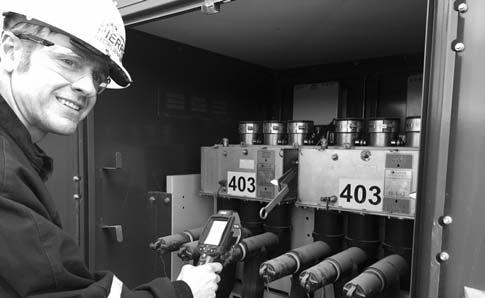
John Petrick, Electric Department Lineman, uses an infrared heat gun to test a high-voltage switch for hot spots.










